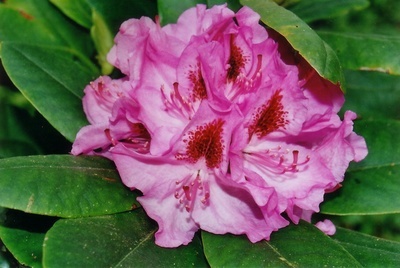Last updated on October 23rd, 2023 at 08:30 pm
Rhododendron is a true evergreen in our gardens. Along with boxwood, hydrangea, lilac and summer lilac, it is one of the most popular and beautiful garden plants. We have many informative facts about the rhododendron as well as care, growth, pruning and location for you.
Contents
Rhododendron – growth and flowering
The rhododendron is an evergreen shrub that usually has a compact growth even without pruning. It blooms in April, May and June, depending on the variety. Its flowers are very magnificent and intensely fragrant. The strong flower colors contrast nicely with the green of the leaves. The flowering period usually lasts 2 weeks. Important: The wilted inflorescences should be broken out.
Rhodendron – origin and distribution
Rhododendrons are a genus of the heather family. It is also called rose tree (Rhodo = Greek rose, Dendron = Greek tree). There are over 1000 species, with the main distribution area being on the south and southeast sides of the Himalayan Mountains in Asia. Over 300 tropical rhododendron species are found in the mountain ranges of Malaysia, Indonesia, Borneo, New Guinea and the Philippines. Other species come from eastern China, the Korean peninsula and Japan. In addition, there are about 20 North American species in coastal areas and in the Rocky Mountains. Only a few rhododendron species are native to Europe, Asia Minor and the Caucasus. Four native species are known in Europe. All distribution areas are characterized by a lot of rainfall.
Where to buy rhododendrons?

When buying, the key is to exercise caution. The plant should have a compact growth. The foliage should be intense green, buds vigorous and numerous. If the plants have blotchy leaves, refrain from buying.
Ideal location and planting time
The rhododendron loves a semi-shaded location and a humid environment. Too little light is reflected in a less pronounced flowering – too much sun threatens with withering.
Ideally, it should be planted in the period from early March to late May, and between mid-October and late November. When planting, make sure that the hole is at least two to three times as wide and twice as deep as the root ball. You should also use rhododendron soil. The freshly planted rhododendron must be watered intensively so that the root ball does not dry out.
The care and pruning
The rhododendron needs an acidic, lime-free and slightly moist soil for optimal growth. Ideally, it should be watered with rainwater. It is recommended to use special fertilizer and special soil. Both are available in specialized stores. Important: the fertilizer should be rich in magnesium and iron.
Rhododendrons usually grow very compact even without pruning. If necessary, pruning can be used to achieve the desired size and shape. If pruning is necessary, do it in the spring so that the shrub has not yet sprouted new growth. Alternatively, it can be done after flowering. Rejuvenation pruning becomes necessary when the plant becomes bare in the lower part. Rejuvenation will cause new branching to form again. Please remember to fertilize afterwards with rhododendron fertilizer.
Propagate rhodendron
It is recommended to carry out propagation by cuttings or cuttings. From a stock plant can be cut a cutting in the spring or fall. The ideal length is ten to fifteen centimeters. After removing the lower leaves, the cutting should be grown in a pot. Again, please use rhododendron soil, which should always be moist. Place the pot in a bright place and create a greenhouse effect by covering it with foil. Please do not plant out young plants until the following fall or spring.
Alternatively, you can take cuttings for propagation. Shoots near the ground are lightly scored at the point of contact with the ground and covered with soil. You can use a stone for fixing. For straight growth, it is recommended to use a climbing pole. The sinker is supplied by the mother plant, but forms its own roots. After a few months, the cuttings can be separated from the mother plant.
Pests and overwintering
Rhododendron can be threatened by the rhododendron cicada. As a result, bud browning then occurs. For wintering, the plant is left outdoors. However, it should then be watered on frost-free days to prevent it from drying out.
Image sources: by_rainer-sturm_pixelio.de; by_Reiner Rosenwald_pixelio.de; by_Reiner Rosenwald_pixelio.de; by_Anneliese Herda_pixelio.de


